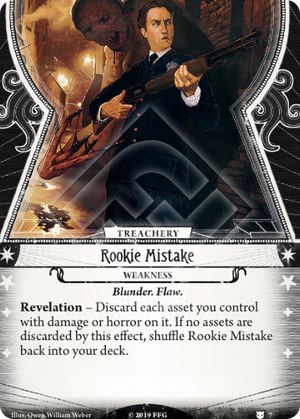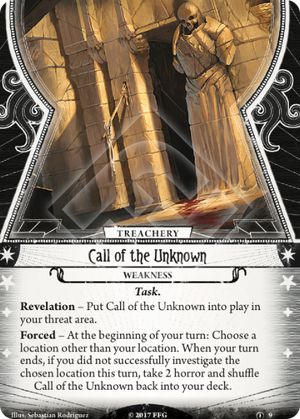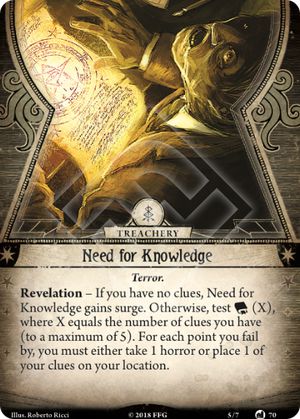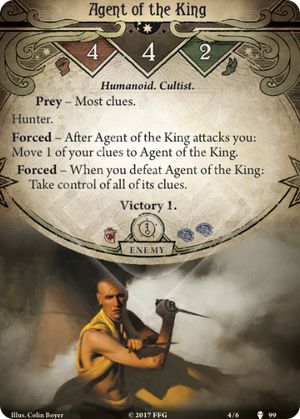
Another flavorful signature Weakness. Looking at the two elements, the effect and the discard condition, we get:
The effect: Tommy likes Assets, and he likes putting damage and horror on them. This card requires the discipline to use those Assets carefully, so you only lose one or two. It's best if they are cheap (hello Cherished Keepsake and Leather Coat). You might not want to play Agency Backup until you've already drawn this, but Tommy's weakness and his strength is that his draw is terrible, and you may very well go several scenarios without seeing this particular problem. Tommy's access to 0-2 lets you pack Resourceful and Scrounge for Supplies to get the discarded cards back into your hand.
The discard condition: You draw it and either pay its cost or shuffle it back in. A rookie move, you might say.
Taken together, this is a below average signature weakness, unlikely to inconvenience Tommy too much in most scenarios and will almost never be the main reason you lose a scenario.



